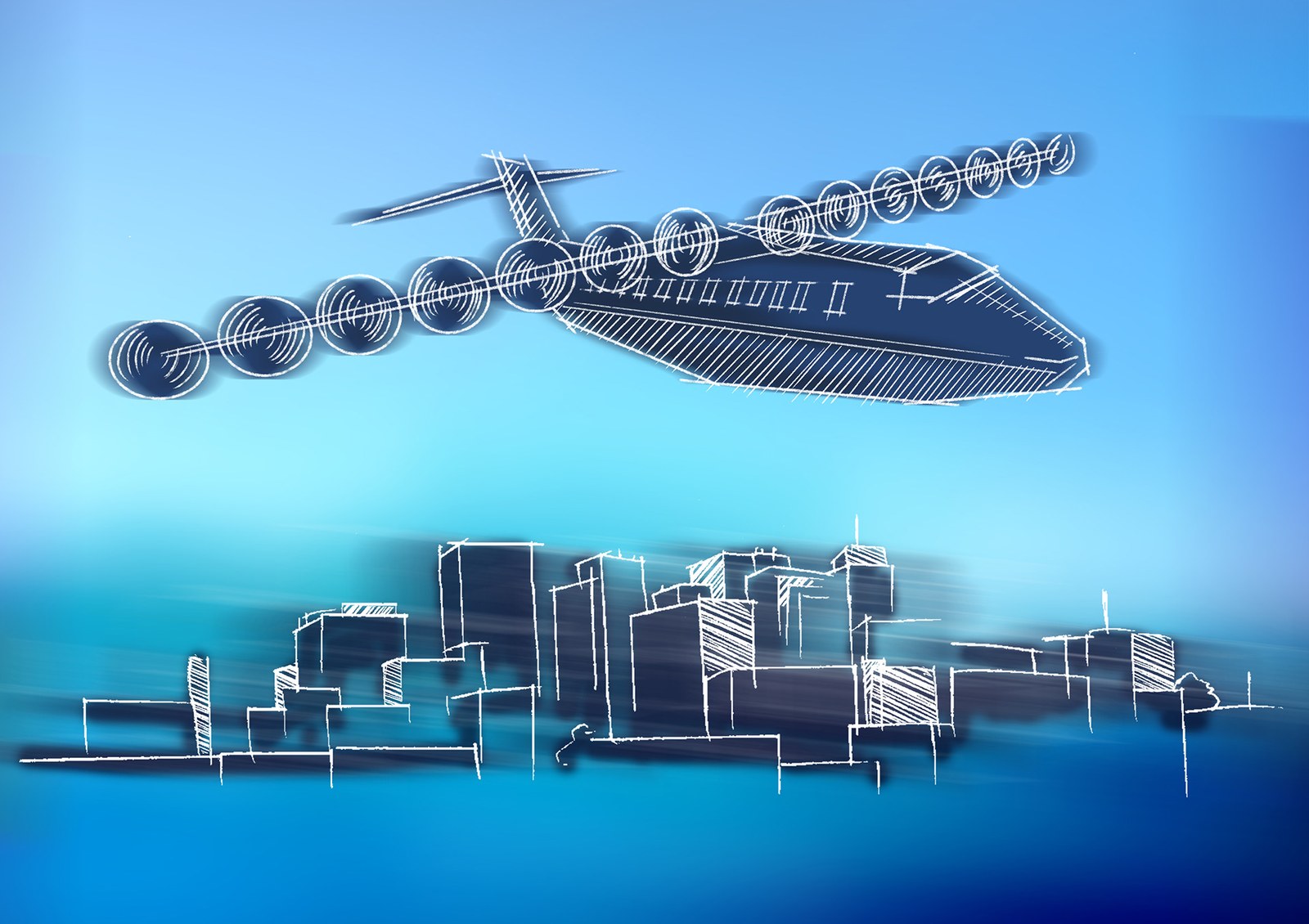The Electric Aircraft

Outlook:
Electric or hybrid-electric short-haul aircraft for commercial air transport entering the market in 2040 will significantly improve the climate balance and air quality, as well as reduce noise.
Requirement: Reconciling air transport and environmental objectives
The demand for air transport is on the rise. At the same time, there is an ever-increasing call from society at large to significantly reduce the impact of air transport on the environment and climate. Air transport also needs to be reconciled with the climate targets established in the Paris Agreement and local needs in terms of air quality and noise reduction. Although existing flight restrictions and fees are having some effect, initiatives devised to relieve the burden on society tend to restrict economic development. This is why there is a need for new aircraft configurations that can be operated successfully in commercial use, but which have much lower emissions and create less noise. Social interests have to be reconciled with economic interests – at a cost that customers can afford.
Propulsion systems of the future
Electric or hybrid-electric propulsion systems have the potential to enable aircraft configurations that fulfil all of the aforementioned requirements. Technological developments, especially in the area of electric power storage, give rise to the realistic expectation that the first such aircraft – on a commercially relevant scale, carrying 50 to 70 passengers and with a range of up to 1000 kilometres – will be flying as early as the 2040s. (Hybrid-) electric aircraft require fundamentally new propulsion technologies, but they pave the way for new, revolutionary aircraft configurations, and are also likely to lead to new commercial operational concepts. There are many questions regarding the aircraft concepts of the future, which can only be answered if the interconnected system of operations, vehicle design and propulsion technology are considered as a whole.
Objective: Identify, validate and demonstrate key technologies
DLR is working intensively to address the most pressing research questions with a view to ensuring that environment-friendly, hybrid-electric short-haul aircraft able to carry 50 passengers can operate on commercial routes from 2040.
The prerequisite for this is that all of the key technologies can be evaluated, validated and meaningfully demonstrated by 2030, before the start of the actual development programme.
However, these relevant key technologies must first be identified. This alone is a challenging task in view of the very large design space, which ranges from disparate energy sources to various propulsion technologies, vehicle concepts and operational models. There are also diverse design objectives within the overall system, including environment friendliness, safety, economic feasibility and social acceptance, all of which pose challenges.
The most promising overall concepts require a strategy to validate the key technologies. This includes efforts relating to individual technology components and at the level of the overall system – in order to validate and demonstrate the interactions between the individual technologies within the system context in a meaningful way. Ultimately, this will enable the design, approval, construction and operation of a DLR test aircraft. Timely, specific planning is necessary to achieve this goal by 2030.
Testing, developing and launching new concepts
In parallel to the development of an initial short-haul aircraft, DLR is researching various hybrid-electric powertrains using a DO 228 as a test aircraft. This will form a suitable basis for testing new components, as well as developing a complete hybrid-electric configuration for this size class. The LK1 will also be used to investigate and evaluate the technical and commercial feasibility of vehicle concepts for the 19-pax class with EIS 2029. This size class, which includes the Dornier DO 228 and the Beechcraft 1900, is expected to have great economic potential. The end result could be a product that allows for new commercial operating concepts thanks to its much lower environmental impact – for example, with regard to take-off and landing close to cities or in terms of extended hours of operation.
In addition, (hybrid-) electric fixed- or rotary-wing aircraft can enable new concepts such as individual air mobility in urban areas. The LK1 is deliberately focused on the area of commercial short-haul aircraft.
